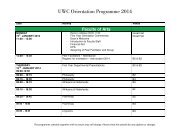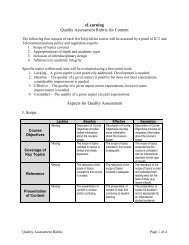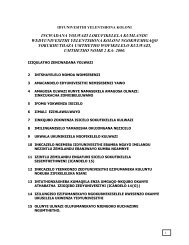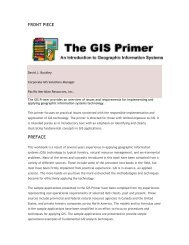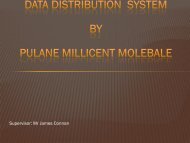Ecosystem Guidelines for Environmental Assessment
Ecosystem Guidelines for Environmental Assessment
Ecosystem Guidelines for Environmental Assessment
You also want an ePaper? Increase the reach of your titles
YUMPU automatically turns print PDFs into web optimized ePapers that Google loves.
The drafting process, which was co-ordinated by the Botanical Society's Conservation Unit, entailed:<br />
Identifying a range of important ecosystems and habitats within the Western Cape;<br />
Inviting more than 30 biodiversity specialists to contribute what they viewed as the most critical<br />
questions that should be asked when undertaking environmental assessments in each of these<br />
ecosystems or habitats;<br />
Collating these contributions and presenting them as a discussion document <strong>for</strong> further development<br />
and refining at a workshop hosted by the Fynbos Forum in 2004; and<br />
Refining the guidelines with further input from specialists.<br />
Limitations of the guidelines<br />
These guidelines are not intended to provide detailed instructions to land-use planners, environmental<br />
assessment practitioners or other users, or to substitute <strong>for</strong> scoping and/or the involvement of biodiversity<br />
(or other) specialists in the environmental assessment process when appropriate. Please refer to the<br />
Department of <strong>Environmental</strong> Affairs and Development Planning's (DEA&DP) Guideline <strong>for</strong> involving<br />
biodiversity specialists in EIA processes (Brownlie 2005) <strong>for</strong> additional in<strong>for</strong>mation on when, how, and<br />
from whom to obtain specialist input on biodiversity.<br />
Structure of the guidelines<br />
The ecosystem-specific guidelines comprise eight separate sections covering different ecosystems,<br />
as listed in Table 1. Each section gives the following in<strong>for</strong>mation:<br />
1. The main 'drivers' of the ecosystem, which determine its composition and structure.<br />
2. The main issues in, threats to, and vulnerabilities of the ecosystem.<br />
3. The 'bottom lines' or 'non-negotiables' <strong>for</strong> change in the ecosystem if its functioning and biodiversity<br />
are to be conserved.<br />
4. Considerations with regard to the most appropriate location or siting of infrastructure, activities<br />
and/or disturbance within the ecosystem, to minimize negative impacts.<br />
5. Best management within the ecosystem to promote its persistence.<br />
6. The use of appropriate indicators <strong>for</strong> monitoring change within the ecosystem.<br />
7. The probable reversibility of impacts on the ecosystem after disturbance, and the potential <strong>for</strong> restoration.<br />
8. Potential compensation or offsets <strong>for</strong> loss of biodiversity within the ecosystem.<br />
(left) Mountain fynbos complexes are mostly well-protected.<br />
(right) Cultivation has irreversibly trans<strong>for</strong>med many lowland ecosystems.<br />
CHARL DE VILLIERS<br />
MANDY BARNETT<br />
12 : INTRODUCTION



